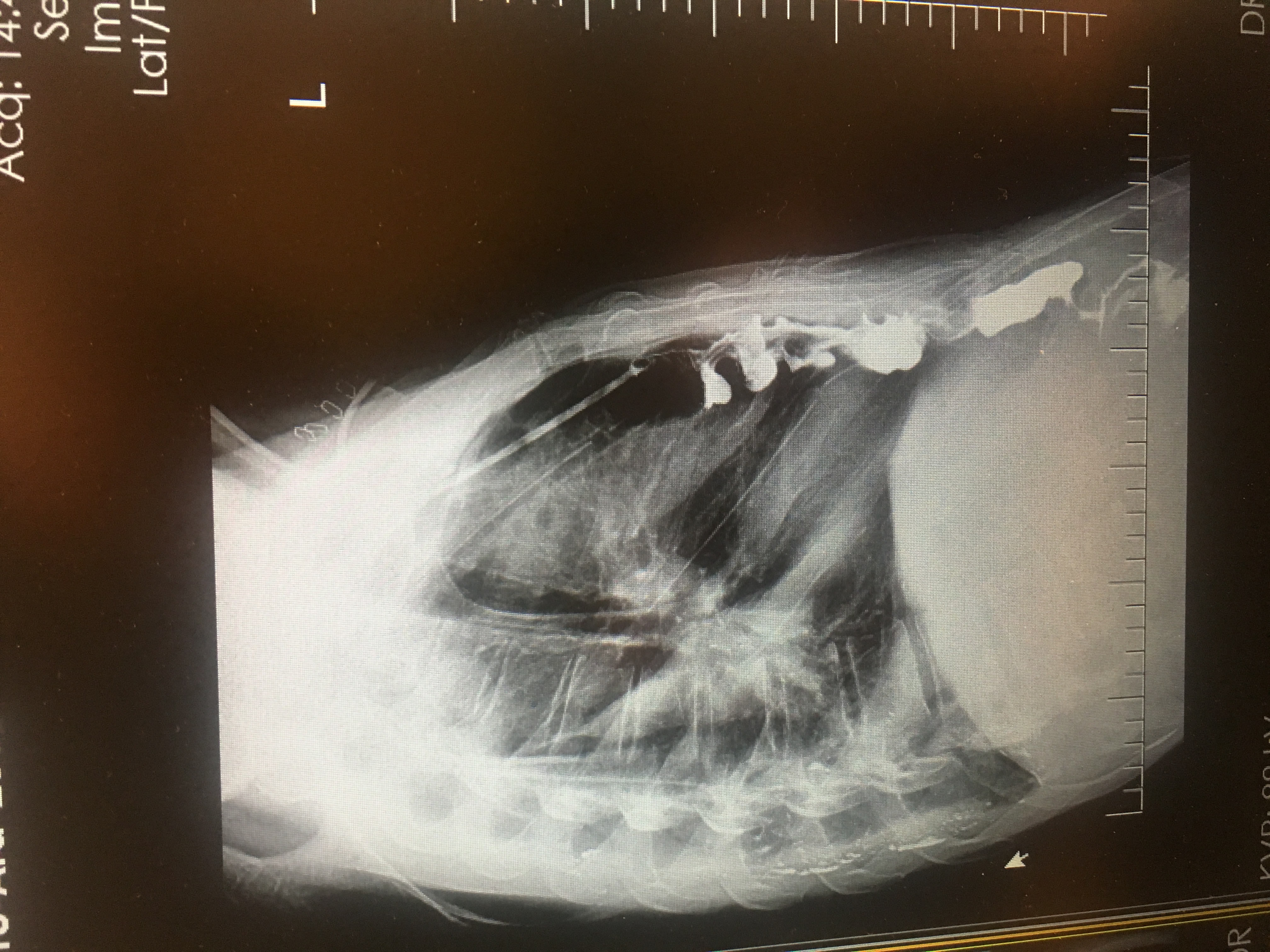When we remove part of the esophagus it is necessary to make a new one. Cutting a segment of it and suturing the ends together does not work in esophagus and is not applied.
We frequently use stomach as a tube tube for esophageal replacement, but in certain situations, small or large bowel can be used.
Jejunum (Small Bowel):
It is usually used to replace the defect in the neck region following removal of tumors in the beginning of the esophagus. A healthy loop of jejunum is chosen (Figure 1)
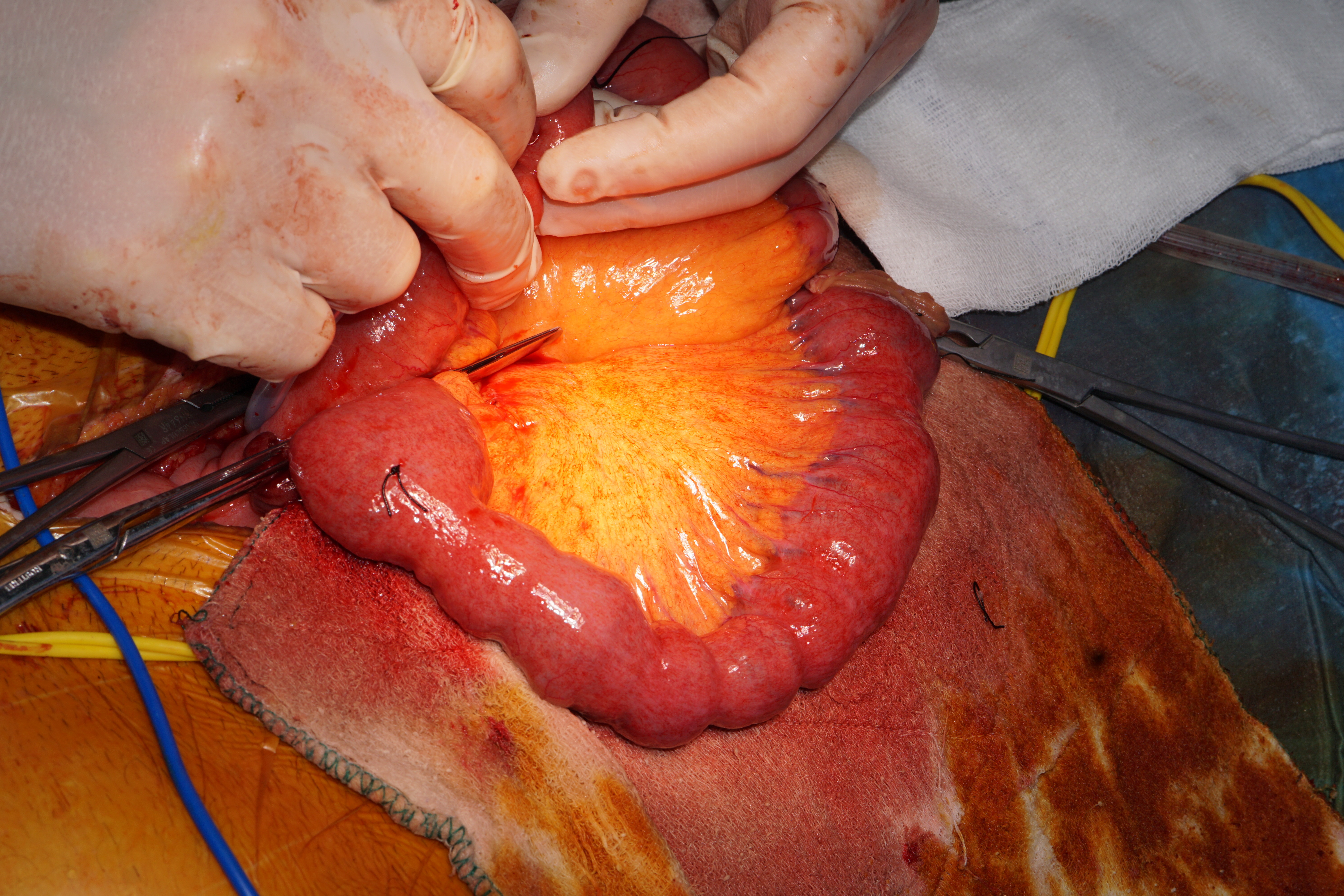
and placed in the neck region as a transplanted organ (Figure 2).
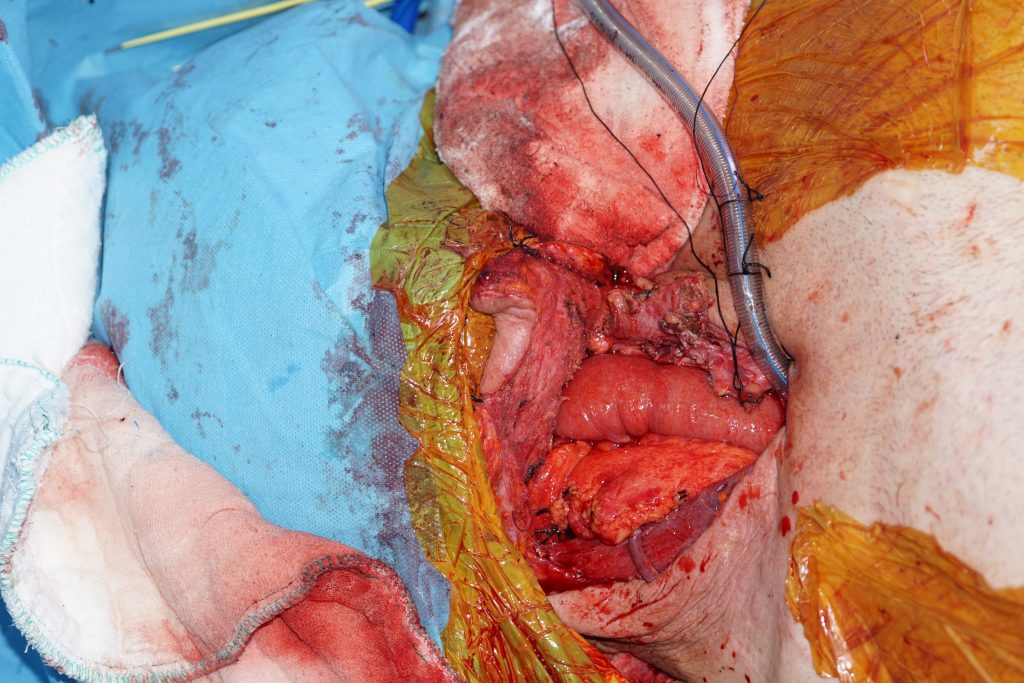
Upper end of the jejunum is sutured to the pharynx and the lower end is sutured to the esophagus at the entrance of the chest. Afterwards patients can start feeding orally.
Jejunum can be used in other situations as well. Such as;
If there is a non healing hole between esophagus and trachesa (windpipe),
If there is a chronic fistula in the esophagus following laryngectomy and speech device insertion,
If a tumor is located in the entrance of the stomach and the whole stomach plus lower end of the esophagus are removed.
As jejunum has a similar diameter with esophagus, it is an excellent replacement organ. There are not many centers nationally and internationally experienced in jejunal transplantation for esophageal replacement. This surgical procedure is a teamwork and esophageal and microsurgeons work together.
Colon (Large Bowel):
In certain situations colon is used to replace the esophagus. (Figure 3).
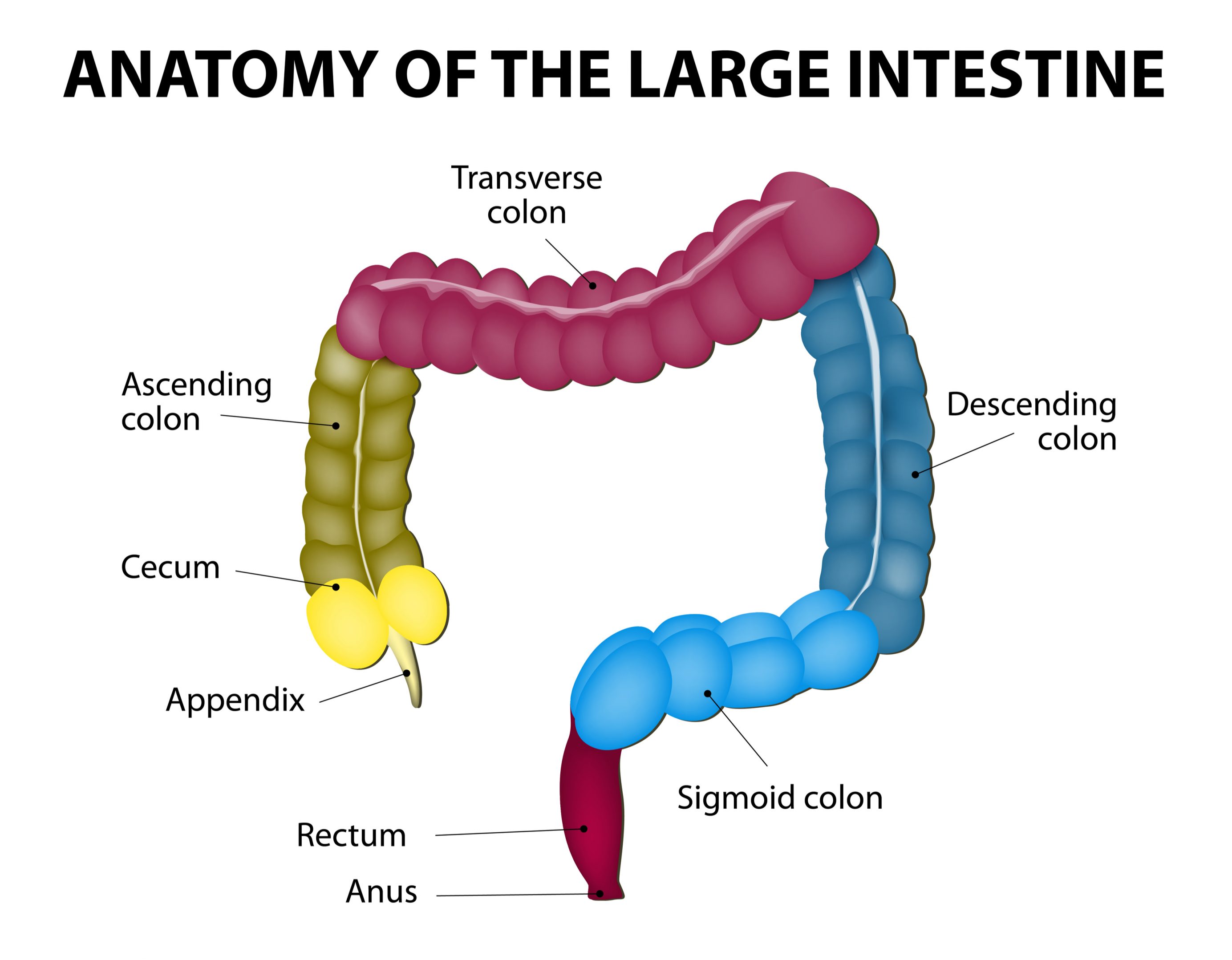
It is rarely indicated but colon is a suitable organ for long term (many years – even decades) replacement of the esophagus. Most commonly used part is the left side.
Colon replacement for esophagus is used when;
Stomach has been removed or operated on,
If esophagus is injured secondary to chronic reflux or caustic injury especially during childhood,
If we need to protect stomach in long term.
If left side of the colon is used, it is possible to remove the whole esophagus and replace it with colon until the neck. You can see an esophagus 3 months after caustic injury (Figure 4).
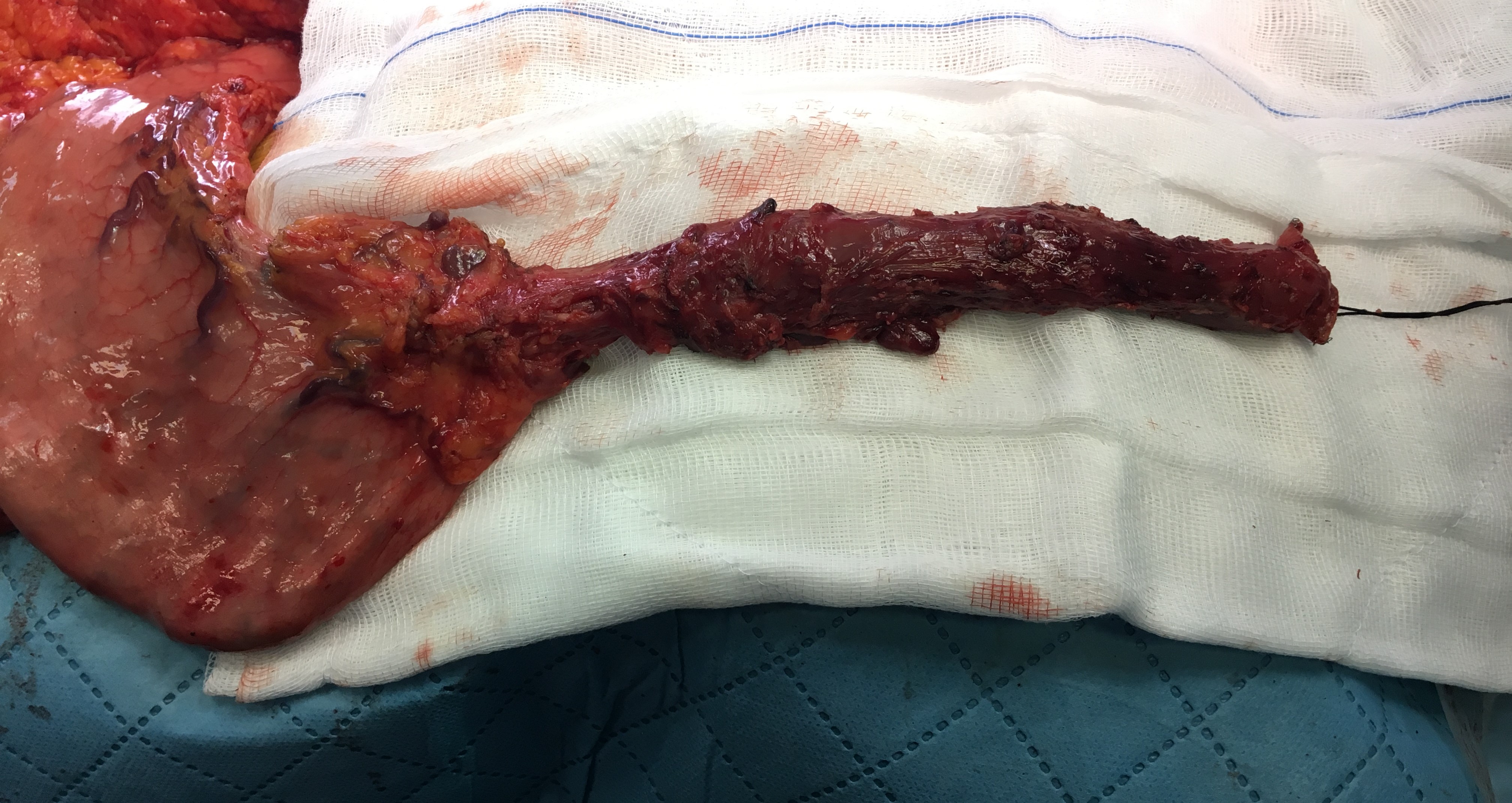
). In this patient, we removed 90% of the esophagus and part of the stomach and replaced it with a long colon segment (Figure 5).
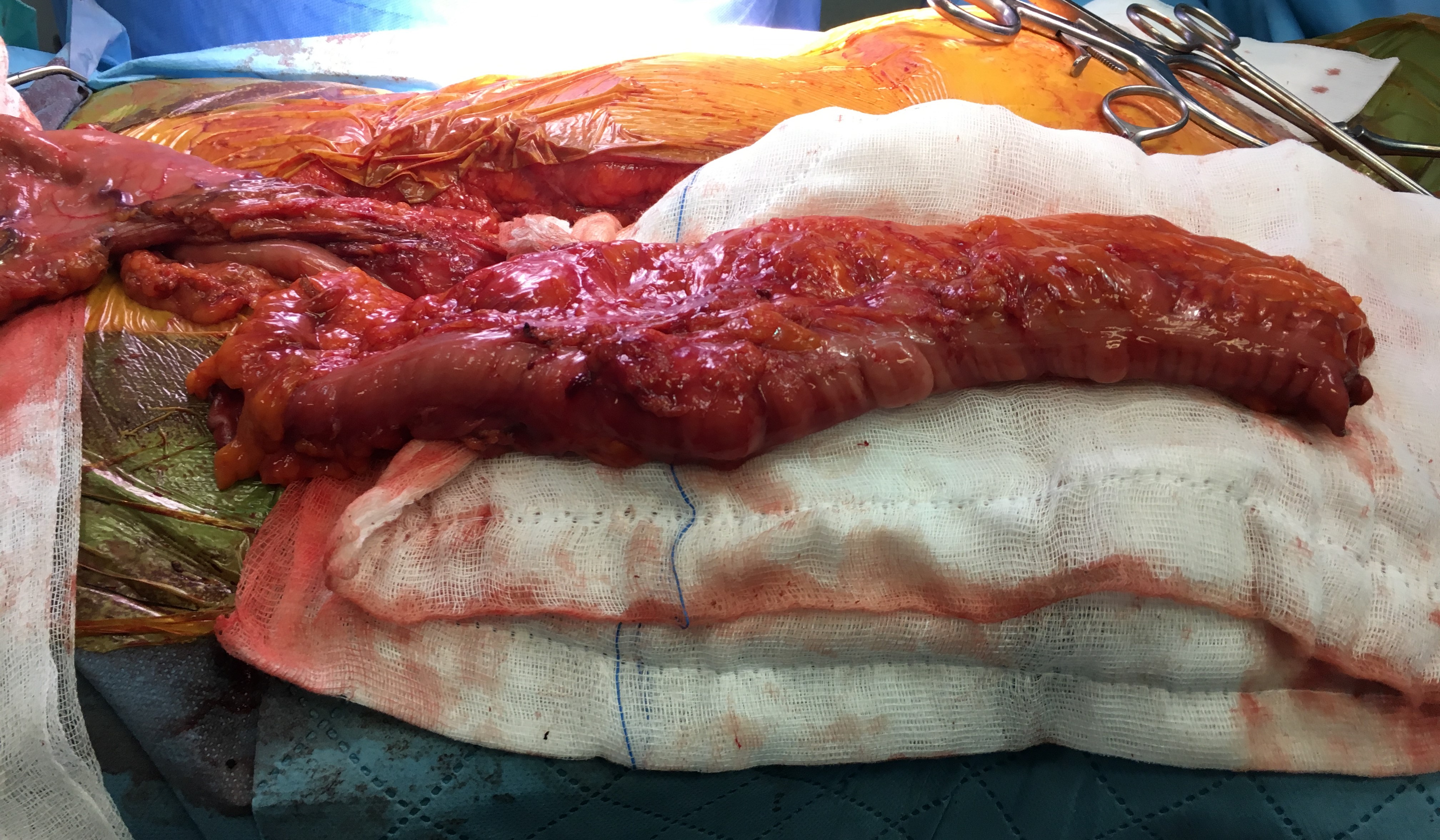
You can see the video of a patient with a chronic hole between esophagus and windpipe who had free jejunum replacement of upper half of the stomach from the neck till mid-chest. Despite the magnitude of surgery, the patient healed well and started feeding orally and gained 15 kg in six months (Video 1).
In the second video, you see the endoscopy of a patient who had a colon replacement in the chest which was passed through a tunnel in front of the heart and big vessels. The patient is feeding normally and gained weight about one year after surgery (Video 2).
You can also see the chest x ray and contrast substance in the colon which was used to replace the esophagus (Figure 6).
